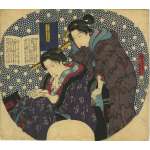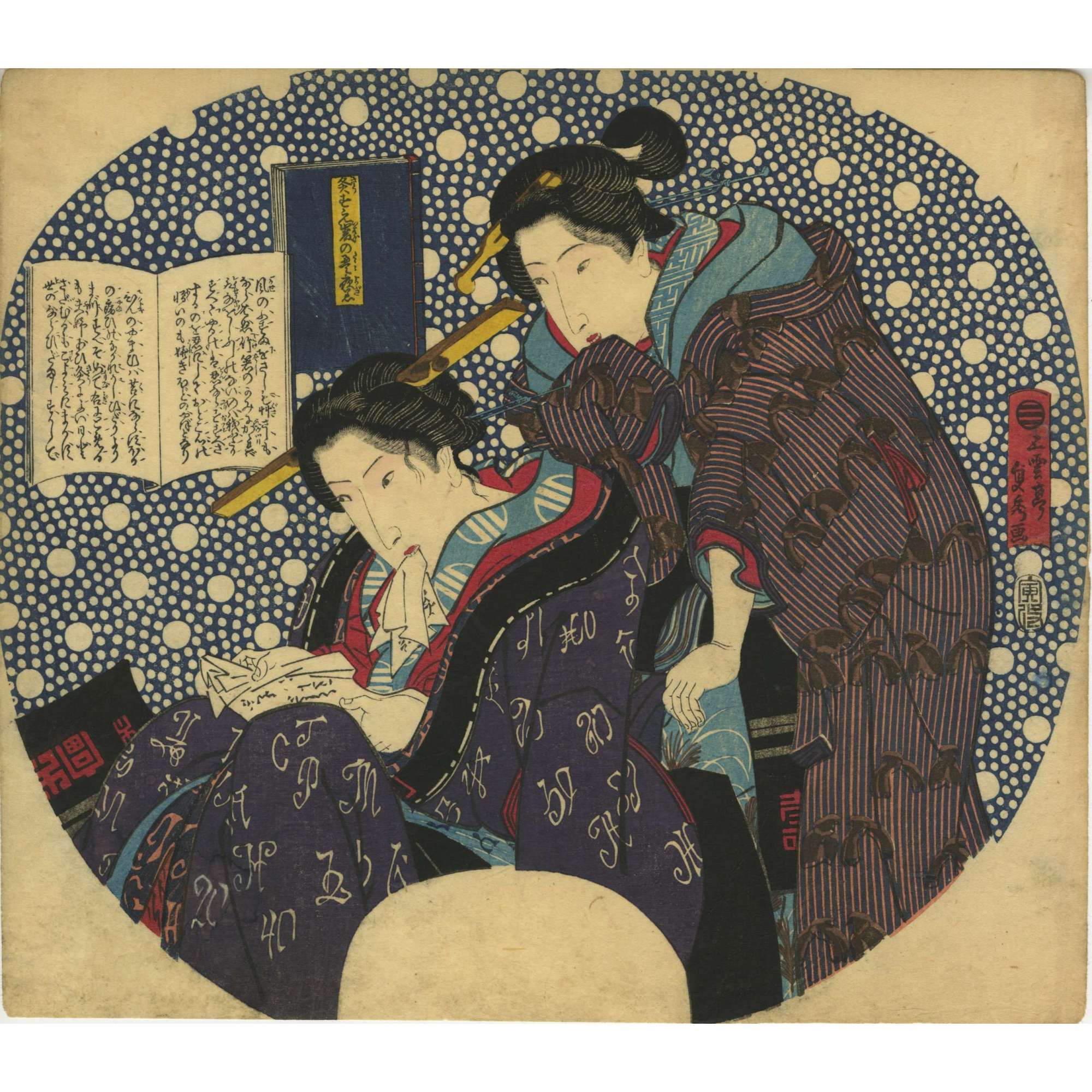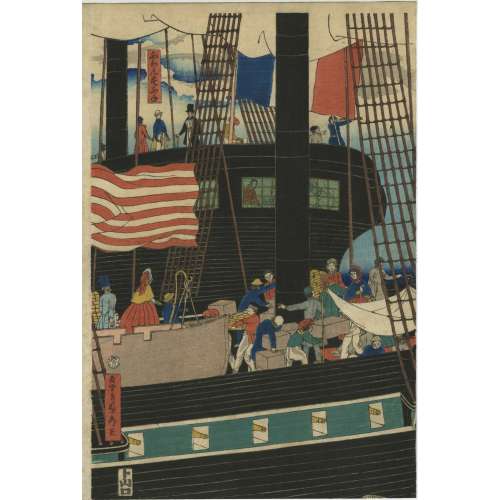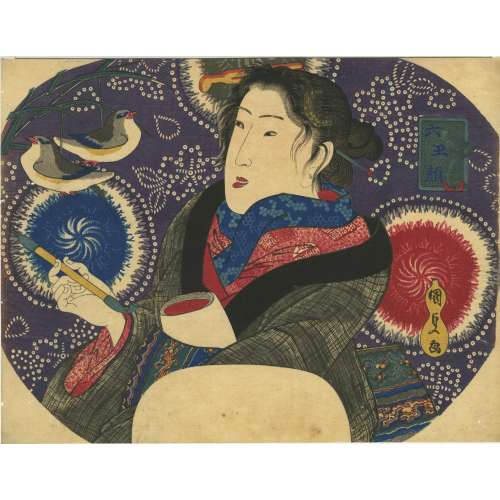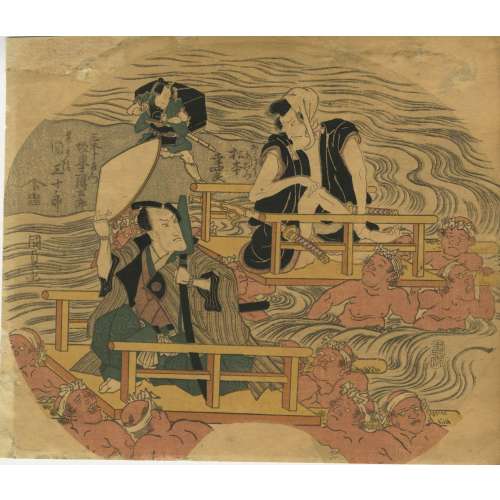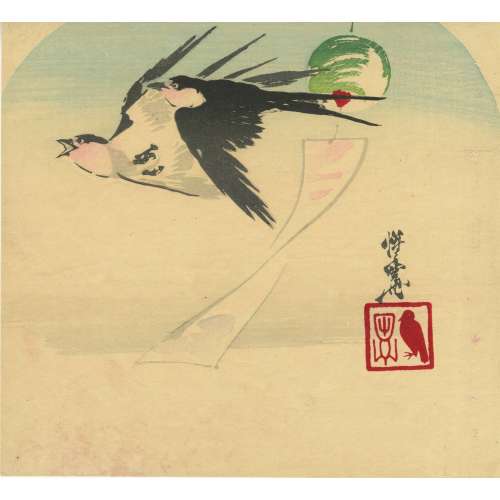Artist: Utagawa Sadahide [歌川 貞秀], a.k.a. Gountei Sadahide [五雲亭 貞秀] (1807 – c. 1878/9).
Signed: Gountei Sadahide ga [五雲亭貞秀画]
Pubisher: Ibaya Senzaburō [伊場屋仙三郎] (Japanese, 1815 – 1869)
Date-aratame seal: Bunsei 13 / Tenpō 1 (1830).
Ref: Ritsumeikan University # Z0172-587.
Title: The tatami night robe of Iwao [巌の畳夜着] (Kyusue Iwao no tatami yogi); 灸すゑ巌の畳夜着(きゅうすえいわおのたたみよぎ。「灸すえ」– one of the main melodies in katōbushi (河東節) type of jōruri [浄瑠璃]. For a detailed explanation in Japanese, see also HERE).
The night robe of Iwao is decorated with characters resembling Arabic numerals, and Latin and Cyrillic letters. A similar kimono can be seen on Kunisada’s print Hotoke Gozen, Mirror of Virtuous and Wise Women (Kenjo Kagami) at RISD museum accession number 13.1383, portraying Hotoke Gozen (佛御前), a character of The Tale of the Heike [平家物語] (Heike Monogatari); published by Yamamotoya Heikichi (山本屋平吉) (Japanese, fl. c. 1812 – 1886) in the 1830s (see below).

RISDM 13-1383
A series of three prints is dedicated to a katōbushi performance of the Soga-themed plays.
|
Yukari no Edo-zakura |
The tatami night robe of Iwao |
Tangled Hair and the Evening Braided Hat |
They all have a background of hail patterns (Arare-ko-mon) [霰小紋], similar to Kunisada’s Iwai Kumesaburō II as An no Heibei [SVJP-0304.2019], see below.



